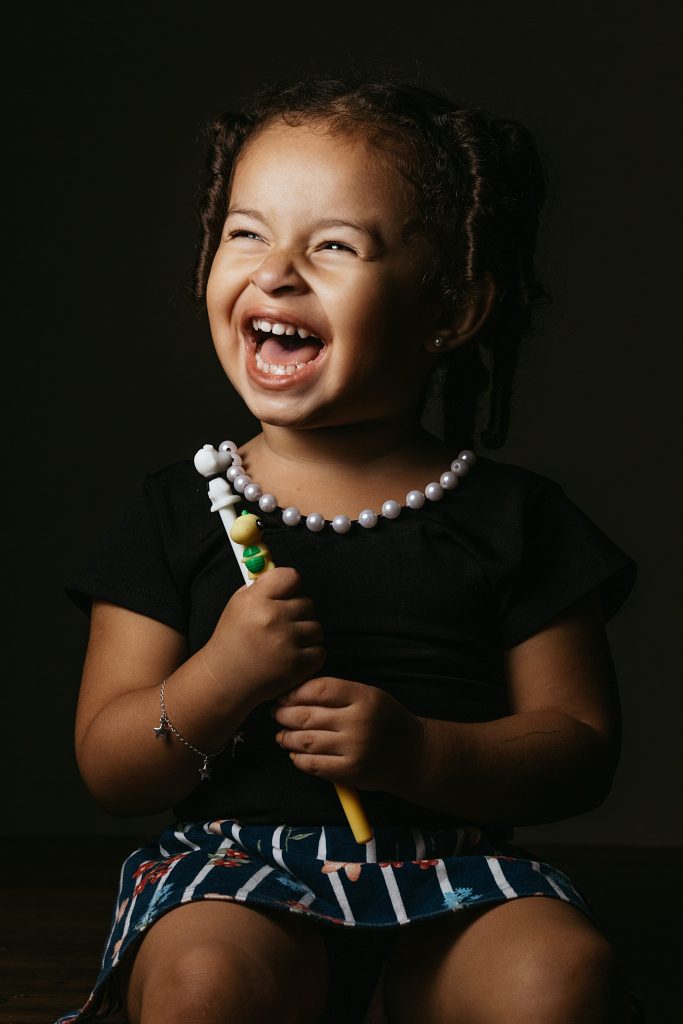60 Psychosocial Development in Early Childhood
Martha Lally; Suzanne Valentine-French; and Dinesh Ramoo
Learning Objectives
- Describe Erikson’s third stage of initiative vs. guilt
- Describe the changes in self-concept and self-esteem
- Describe children’s understanding of others
- Describe emotional regulation and delayed gratification
- Describe young children’s understanding of morality
- Summarize the main theories of gender development
- Describe the major parenting styles and their consequences for children
- Describe the role of siblings in children’s development
- Summarize the types of play in which children engage
- Describe the influence of the media on young children’s social development
Erikson: Initiative vs. Guilt
The trust and autonomy of previous stages develop into a desire to take initiative or to think of ideas and initiate action (Erikson, 1982). Children may want to build a fort with the cushions from the living room couch or open a lemonade stand in the driveway or make a zoo with their stuffed animals and issue tickets to those who want to visit. Or they may just want to get themselves ready for bed without any assistance. To reinforce taking initiative, caregivers should offer praise for the children’s efforts and avoid being critical of messes or mistakes. Placing pictures of drawings on the refrigerator, purchasing mud pies for dinner, and admiring towers of Legos will facilitate the child’s sense of initiative.
Self-Concept and Self-Esteem
Early childhood is a time of forming an initial sense of self. Self-concept is our self-description according to various categories, such as our external and internal qualities. In contrast, self-esteem is an evaluative judgment about who we are. The emergence of cognitive skills in this age group results in improved perceptions of the self. If asked to describe yourself to others you would likely provide some physical descriptors, group affiliation, personality traits, behavioural quirks, and important values and beliefs. When researchers ask young children the same open-ended question, the children provide physical descriptors, preferred activities, and favourite possessions. Thus, a 3-year-old might describe herself as a 3-year-old girl with red hair who likes to play with Legos. This focus on external qualities is referred to as the categorical self. However, even children as young as three know there is more to themselves than these external characteristics. Harter and Pike (1984) challenged the method of measuring personality with an open-ended question as they felt that language limitations were hindering the ability of young children to express their self-knowledge. They suggested a change to the method of measuring self-concept in young children, whereby researchers provide statements that ask whether something is true of the child (such as “I like to boss people around” or “I am grumpy most of the time”). Consistent with Harter and Pike’s suspicions, those in early childhood answer these statements in an internally consistent manner, especially after the age of four (Goodvin, Meyer, Thompson, and Hayes, 2008) and often give similar responses to what others (parents and teachers) say about the child (Brown, Mangelsdorf, Agathen, and Ho, 2008; Colwell and Lindsey, 2003).

Young children tend to have a generally positive self-image. This optimism is often the result of a lack of social comparison when making self-evaluations (Ruble, Boggiano, Feldman, and Loeble, 1980) and comparison between what they could once do to what they can do now (Kemple, 1995). However, this does not mean that preschool children are exempt from negative self-evaluations. Preschool children with insecure attachments to their caregivers tend to have lower self-esteem at age four (Goodvin et al., 2008). Maternal negative affect was also found by Goodwin and her colleagues to produce more negative self-evaluations in preschool children.
Self-Control
Self-control is not a single phenomenon. It is multifaceted and includes: response initiation, the ability to not initiate a behaviour before you have evaluated all of the information; response inhibition, the ability to stop a behaviour that has already begun; and delayed gratification, the ability to hold out for a larger reward by forgoing a smaller immediate reward (Dougherty, Marsh, Mathias, and Swann, 2005). It is in early childhood that we see the start of self-control, a process that takes many years to fully develop. In the now classic “marshmallow test” (Mischel, Ebbesen, and Zeiss, 1972) children are confronted with the choice of a small immediate reward (a marshmallow) and a larger delayed reward (more marshmallows). Over the years, Walter Mischel and his colleagues found that the ability to delay gratification at the age of four predicted better academic performance and health later in life (Mischel et al., 2011). Self-control is related to executive function, discussed earlier in the chapter. As executive function improves, children become less impulsive (Traverso, Viterbori, and Usai, 2015).
Media Attributions
- Figure 4.18: Children develop their self-concept in early childhood. © Jonathan Borba is licensed under a Public Domain license

